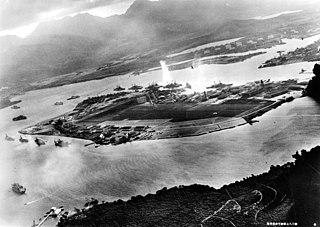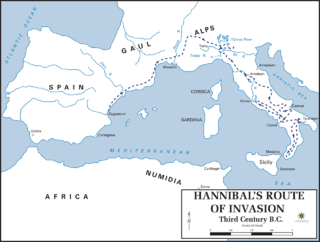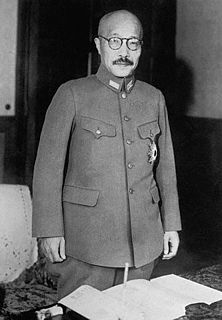
Isoroku Yamamoto's sleeping giant quotation is a film quote by the Japanese Admiral Isoroku Yamamoto regarding the 1941 attack on Pearl Harbor by forces of Imperial Japan.

The attack on Pearl Harbor was a surprise, preemptive military strike by the Imperial Japanese Navy Air Service upon the United States against the naval base at Pearl Harbor in Honolulu, Hawaii, just before 08:00, on Sunday morning, December 7, 1941. The attack led to the United States' formal entry into World War II the next day. The Japanese military leadership referred to the attack as the Hawaii Operation and Operation AI, and as Operation Z during its planning.

Pearl Harbor is a 2001 American romantic war drama film directed by Michael Bay, produced by Bay and Jerry Bruckheimer and written by Randall Wallace. It stars Ben Affleck, Kate Beckinsale, Josh Hartnett, Cuba Gooding Jr., Tom Sizemore, Jon Voight, Colm Feore, and Alec Baldwin. The film presented a heavily fictionalized version of the Japanese attack on Pearl Harbor on December 7, 1941, focusing on a love story set amidst the lead up to the attack, its aftermath, and the Doolittle Raid.

The Battle of Cannae was a major battle of the Second Punic War that took place on 2 August 216 BC in Apulia, in southeast Italy. The army of Carthage, under Hannibal, surrounded and decisively defeated a larger army of the Roman Republic under the consuls Lucius Aemilius Paullus and Gaius Terentius Varro. It is regarded both as one of the greatest tactical feats in military history and as one of the worst defeats in Roman history.

The Battle of Bunker Hill was fought on June 17, 1775, during the Siege of Boston in the early stages of the American Revolutionary War. The battle is named after Bunker Hill in Charlestown, Massachusetts, which was peripherally involved in the battle. It was the original objective of both the colonial and British troops, though the majority of combat took place on the adjacent hill which later became known as Breed's Hill.

A Pyrrhic victory is a victory that inflicts such a devastating toll on the victor that it is tantamount to defeat. Someone who wins a Pyrrhic victory has also taken a heavy toll that negates any true sense of achievement or damages long-term progress.

William Prescott was an American colonel in the Revolutionary War who commanded the patriot forces in the Battle of Bunker Hill. Prescott is known for his order to his soldiers, "Do not fire until you see the whites of their eyes", such that the rebel troops may shoot at the enemy at shorter ranges, and therefore more accurately and lethally, and so conserve their limited stocks of ammunition. It is debated whether Prescott or someone earlier coined this memorable saying.

Yoshimichi Hara (原嘉道) was a Japanese statesman and the president of the Japanese privy council during World War II, from June 1940 until his death.
The Hull note, officially the Outline of Proposed Basis for Agreement Between the United States and Japan, was the final proposal delivered to the Empire of Japan by the United States of America before the attack on Pearl Harbor and the Japanese declaration of war. The note was delivered on November 26, 1941, and is named for Secretary of State Cordell Hull. It was the culmination of a series of events leading to the attack on Pearl Harbor. It was considered as an ultimatum for Japan to withdraw from China and other occupied territories, and was perceived by the Japanese Government at the time and many historians around the world as a casus belli.

USS Bunker Hill was one of 24 Essex-class aircraft carriers built during World War II for the United States Navy. The ship was named for the Battle of Bunker Hill in the American Revolutionary War. Commissioned in May 1943 and sent to the Pacific Theater of Operations, the ship participated in battles in the Southwest Pacific, Central Pacific and the drive toward Japan through Iwo Jima, Okinawa, and air raids on the Japanese homeland.

John Willard Toland was an American writer and historian. He is best known for a biography of Adolf Hitler and a Pulitzer Prize-winning history of World War II-era Japan, The Rising Sun.

The Bunker Hill Monument was erected to commemorate the Battle of Bunker Hill, which was among the first major battles between British and Patriot forces in the American Revolutionary War, fought there June 17, 1775. The 221-foot granite obelisk was erected between 1825 and 1843 in Charlestown, Massachusetts, with granite from nearby Quincy conveyed to the site via the purpose-built Granite Railway, followed by a trip by barge. There are 294 steps to the top.

The Boston campaign was the opening campaign of the American Revolutionary War, taking place primarily in the Province of Massachusetts Bay. The campaign began with the Battles of Lexington and Concord on April 19, 1775, in which the local colonial militias interdicted a British government attempt to seize military stores and leaders in Concord, Massachusetts. The entire British expedition suffered significant casualties during a running battle back to Charlestown against an ever-growing number of militia.
A decisive victory is a military victory in battle that definitively resolves the objective being fought over, ending one stage of the conflict and beginning another stage. Until a decisive victory is achieved, conflict over the competing objectives will continue. Like all concepts of warfare, a decisive battle can take place from the tactical or unit level, the operational level, all the way up to the strategic level or battles that bring an end to hostilities, such as the Battle of Hastings, or the Battle of Waterloo.

The consequences of the Japan's attack on Pearl Harbor on December 7, 1941 were many and significant. The attack precipitated the entrance of the United States into World War II. The United States entered the Pacific War, the Battle of the Atlantic and the European theatre of war. Ending with the formal surrender of Japan in Tokyo Bay on 2 September 1945.

Pearl Harbor Aviation Museum is a non-profit founded in 1999 to develop an aviation museum in Hawaii. Part of Senator Daniel Inouye's vision for a rebirth of Ford Island, the museum hosts a variety of aviation exhibits with a majority relating directly to the attack on Pearl Harbor and World War II. The first section of the museum, hangar 37, opened with the museum on December 7, 2006, and features much of the museum's static exhibits. The museum's hangars show damage from the attacks on Pearl Harbor from December 7, 1941.
Richard M. Ketchum (1922–2012) was an American historian and magazine editor. Historian Douglas Brinkley has said that Ketchum was "the finest historian of the American Revolution."

Ford Island is an islet in the center of Pearl Harbor, Oahu, in the U.S. state of Hawaii. It has been known as Rabbit Island, Marín's Island, and Little Goats Island, and its native Hawaiian name is Mokuʻumeʻume. The island had an area of 334 acres (135 ha) when it was surveyed in 1825, which was increased during the 1930s to 441 acres (178 ha) with fill dredged out of Pearl Harbor by the United States Navy to accommodate battleships.
Jack Hifuo Mizuha was an educator, soldier, and judge. He was a member of 442nd Infantry Regiment, and served as the Attorney General of Hawaii from 1958 to 1959, a Circuit Court judge from 1959 to 1961, and a Justice of the Supreme Court of Hawaii from 1961 to 1968. He was a Republican.

The attack on Pearl Harbor has received substantial attention in popular culture in multiple media and cultural formats including film, architecture, memorial statues, non-fiction writing, historical writing, and historical fiction. Today, the USS Arizona Memorial on the island of Oahu honors the dead. Visitors to the memorial reach it via boats from the naval base at Pearl Harbor. The memorial was designed by Alfred Preis, and has a sagging center but strong and vigorous ends, expressing "initial defeat and ultimate victory". It commemorates all lives lost on December 7, 1941.














